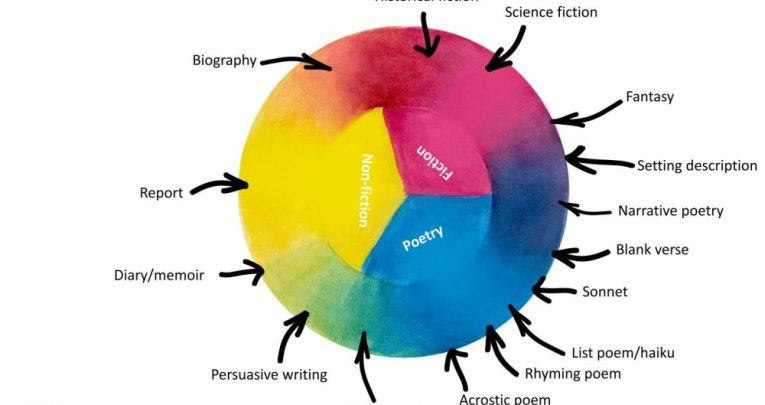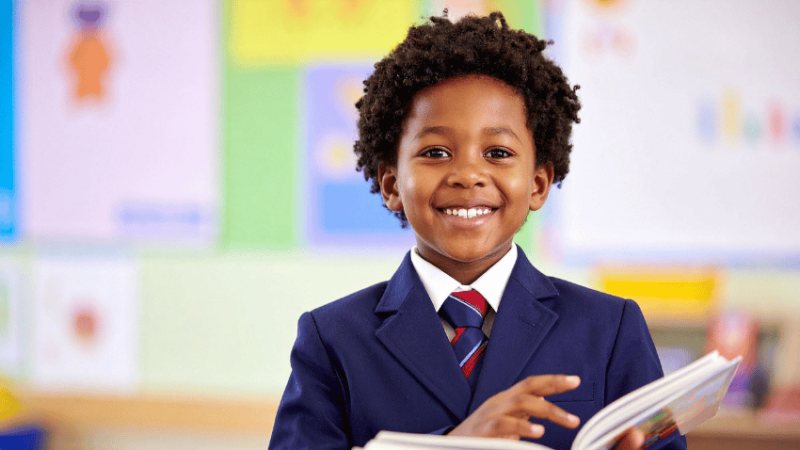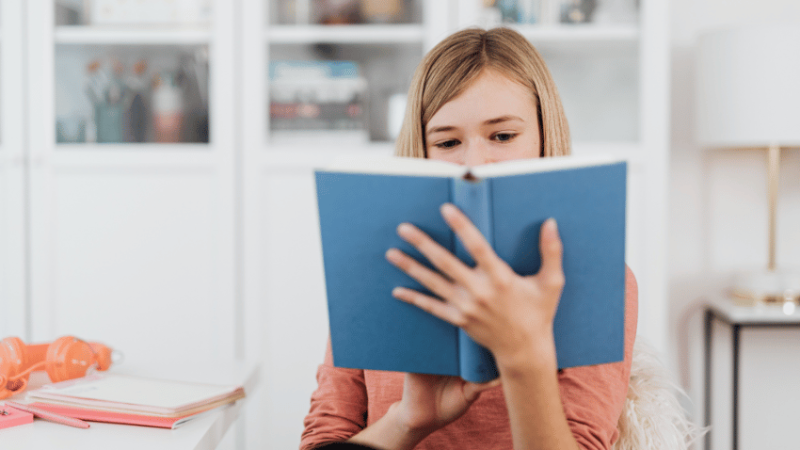Writing genres KS2 – Use a colour wheel to help pupils blend different genres

Help children to use a mix of skills from fiction, non-fiction and poetry in their writing, with this advice and free resource from Matthew Lane…

- by Matthew Lane
- Religious education lead, author and editor for the Reforming RE project Visit website

Voltaire said, “Writing is the painting of the voice”. To ‘paint’ rich texts, children need to use a mix of skills from fiction, non-fiction and poetry writing.
For pupils to find a voice in their writing, they need to be able to blend these elements in a way that will engage their reader. After all, knowing which devices to choose and blend is as nuanced as how much blue and yellow to use to make turquoise.
To support children’s blending skills, plot different forms of fiction, non-fiction and poetry onto a colour wheel: blue for poetry (as poems can be sombre); red for fiction (as stories are full of excitement) and yellow for non-fiction (think double yellow lines to represent formatting rules).
When starting a new text, bring pupils’ attention to the colour wheel and use it to talk about the aims of the piece and writing they have done previously that may be similar. Reflecting on prior learning will give children ideas for techniques they could use again.
If you’re doing biography writing, begin by discussing how this is the factual story of a person’s life. It’s a non-fiction text but it’s written like a narrative. This means pupils will need to think about fiction skills too.
Should they write the biography purely chronologically, or would an exciting event from the middle of the person’s life make a better opening? What about setting descriptions, dialogue and quotes?
These elements will elevate a biography from being a simple chronological report to an exciting text made of short stories that bring the person to life.
Some forms of writing mix a whole host of colours. Take travel writing for example; is it a report or a piece of persuasive writing? To sell the location, pupils will need to write vivid descriptions, calling on their poetic skills.
Explain that for this text type, children will need two different ‘palettes’: one non-fiction and the other poetic.
They’ll need to write an introduction, themed sections and a punchy conclusion that sells the location, but should mix in ‘blue’ poetry features such as rhetorical questions and repetition to engage the reader and avoid a piece of writing that is too flat and ‘yellow’.
Remind children that some parts of the text, such as facts about the location, can be written in simple prose, but similes and alliteration can be used elsewhere to build rich descriptions of key points.
Using a colour wheel helps pupils to reflect on learning from previous writing units and assists them in planning a piece of writing with a reader in mind. They need to think about when and where to use certain techniques for maximum impact.
Remind pupils that they can measure whether they’ve successfully ‘painted’ with their voices by the effect their writing has on the reader.
Matthew Lane is a writer and Y6 teacher at Hethersett CEVC Primary in Norfolk. Follow him on Twitter at @mrmjlane and visit his website at theteachinglane.co.uk.










